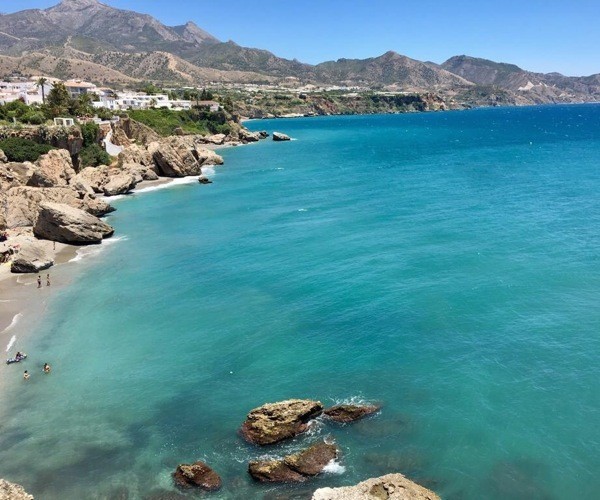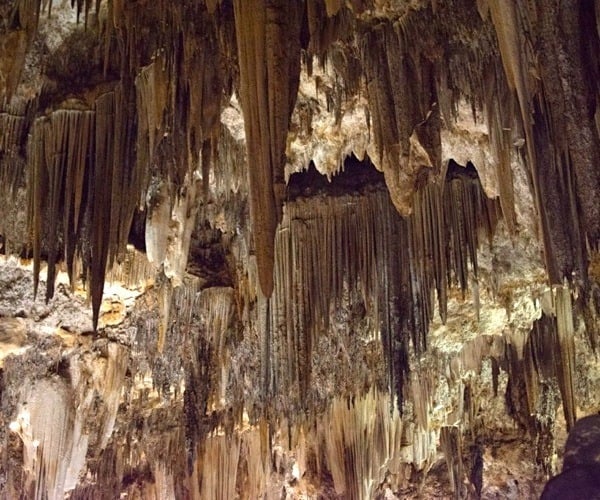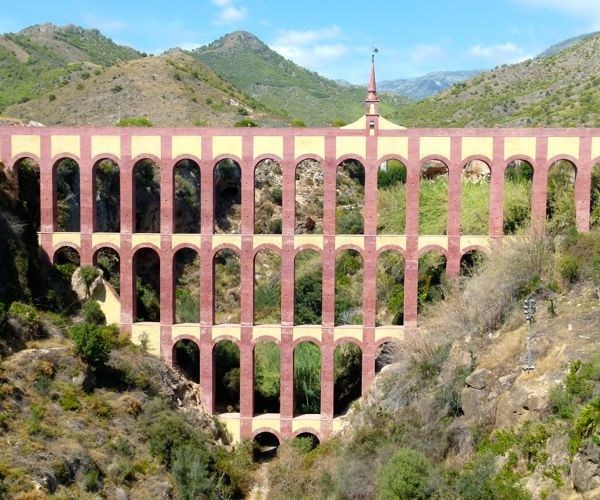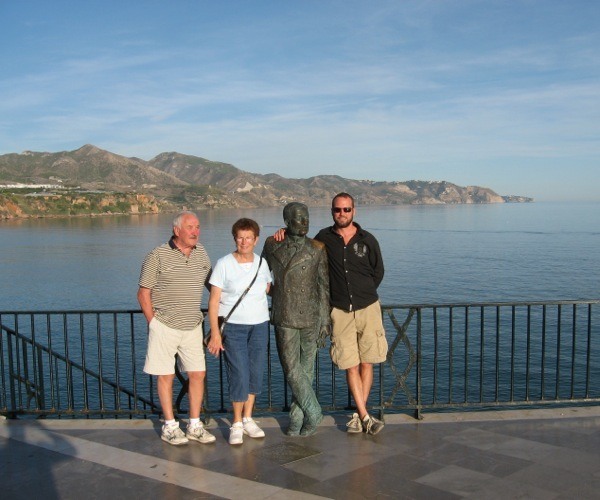Accommodation · Attractions · Europe · Food and Drink · Going Out · Real Estate · Regions · Restaurants · Spain · Travel Miscellany · Western Europe
Andalusian insights: Nerja
Andalusian capitals such as Seville, Granada, Cadiz, Cordoba and Malaga all have a certain mystique about them, well known and well loved. But one of the most endearing things about Andalusia, inspiring that wonderful sense of wanderlust in adventurous travelers, is the proliferation of lesser known towns and villages across the region. The buzzy little seaside fishing ports, fantastical towns perched impossibly atop craggy cliffs, sleepy old agricultural villages and the romantic white-washed “pueblos” of Moorish origins that all capture the imagination and transport visitors to another age.
Among these, Nerja may be better known than many, but is still full of surprises. It’s long been popular with tourists and expatriates, though manages to retain a sense of the authentic, and its sweeping, panoramic views over the Mediterranean and the surrounding coastline are simply timeless. Nerja’s ten miles worth of sandy beaches and private, cliff-protected coves offer an enduring draw; however, other natural and man made attractions, along with extensive shopping, a burgeoning property market and numerous fine restaurants enhance the allure.
 If you haven’t already heard of Nerja, you may be hearing more about it soon. TripAdvisor just named Nerja to its list of “Top destinations on the rise” in Europe, ranking top in Spain, and outdone by only three other places in all of Europe.
An ancient history
Today Nerja is home to some 20,000 inhabitants. One of the main tourist attractions also gives insight into the first inhabitants. In 1959, a group of local youths discovered a massive cave complex just outside of town. Known simply as the Caves of Nerja, the complex stretches more than three miles and has revealed evidence of Neanderthal dwellers, including cave paintings, dating back more than 42,000 years. Inside the caves is a marvel of alien looking stalactites and stalagmites, inspiring awe in visitors from expert geologists and anthropologists to the generally curious tourist alike.
If you haven’t already heard of Nerja, you may be hearing more about it soon. TripAdvisor just named Nerja to its list of “Top destinations on the rise” in Europe, ranking top in Spain, and outdone by only three other places in all of Europe.
An ancient history
Today Nerja is home to some 20,000 inhabitants. One of the main tourist attractions also gives insight into the first inhabitants. In 1959, a group of local youths discovered a massive cave complex just outside of town. Known simply as the Caves of Nerja, the complex stretches more than three miles and has revealed evidence of Neanderthal dwellers, including cave paintings, dating back more than 42,000 years. Inside the caves is a marvel of alien looking stalactites and stalagmites, inspiring awe in visitors from expert geologists and anthropologists to the generally curious tourist alike.
 The Romans established themselves in Nerja, and their archeological remnants at “Detunda” can also still be seen. The Moors later left their mark on Nerja, developing a thriving silk and agricultural trade. Agriculture continues to thrive to this day, as celebrated in the San Ysidro festival each year, though its heyday came in the late 19th/early 20th centuries with the thriving sugar cane business supplying Europe and beyond. The old factory near one of the most stunning local beaches at Maro pays testament to this history today. The 19th century aqueduct of Nerja is another impressive site of interest.
The Romans established themselves in Nerja, and their archeological remnants at “Detunda” can also still be seen. The Moors later left their mark on Nerja, developing a thriving silk and agricultural trade. Agriculture continues to thrive to this day, as celebrated in the San Ysidro festival each year, though its heyday came in the late 19th/early 20th centuries with the thriving sugar cane business supplying Europe and beyond. The old factory near one of the most stunning local beaches at Maro pays testament to this history today. The 19th century aqueduct of Nerja is another impressive site of interest.
 The balcony of Europe
Along with the beach at Maro, one of the prettier and quieter beaches, the adventurous can swim or kayak to numerous private coves accessible only by sea. Meanwhile, Nerja has other popular beaches only steps away from the pedestrianised shopping streets and busy cafes. Perhaps the central most point of Nerja is the famed “Balcon de Europa”, (balcony of Europe) so named by King Alfonso XII on a visit there in 1885. Jutting into the sea on a parabolic shaped section of the coast, the look out point here offers views for miles along the coast in both directions. There is a life-sized statue of King Alfonso at the Balcon, making it easily the most Instagramable spot in Nerja. From here it’s common to see people water skiing, diving, sailing, kayaking or paragliding.
The balcony of Europe
Along with the beach at Maro, one of the prettier and quieter beaches, the adventurous can swim or kayak to numerous private coves accessible only by sea. Meanwhile, Nerja has other popular beaches only steps away from the pedestrianised shopping streets and busy cafes. Perhaps the central most point of Nerja is the famed “Balcon de Europa”, (balcony of Europe) so named by King Alfonso XII on a visit there in 1885. Jutting into the sea on a parabolic shaped section of the coast, the look out point here offers views for miles along the coast in both directions. There is a life-sized statue of King Alfonso at the Balcon, making it easily the most Instagramable spot in Nerja. From here it’s common to see people water skiing, diving, sailing, kayaking or paragliding.
 Fine food
Nerja also draws both locals and tourists for its collection of fine dining establishments, the best along the entire coast from Malaga all the way to Almuñecar. Top among these for modern Spanish cuisine are Oliva, with Chef Carlos Pardo Rodriquez, and Sollun, with Chef Juan Quintanilla. For super fresh, no frill seafood visit Puerta del Mar and its privileged position overlooking the beach next to the Balcon de Europa. Try also Bakus for dinner, or Sekai, a Japanese-Mediterranean fusion restaurant for something different.
Your own place in the sun
For those considering a permanent move or a permanent vacation place in the sun, Nerja is one of the most sought-after locations along the coastline of Malaga province. Real estate in Nerja holds its price better than other coastal towns thanks to the scarcity of properties and beautiful natural surroundings. Meanwhile, prices are still well below those of the peak in 2007, though rising faster than many other coastal areas in Andalusia.
Alan Hazel is Owner and Director of Cortijo El Carligto. Cortijo el Carligto is a private Andalucían hideaway and luxury rental estate in the hills of Malaga, Spain, overlooking the Mediterranean.
If you would like to be a guest blogger on A Luxury Travel Blog in order to raise your profile, please contact us.
Fine food
Nerja also draws both locals and tourists for its collection of fine dining establishments, the best along the entire coast from Malaga all the way to Almuñecar. Top among these for modern Spanish cuisine are Oliva, with Chef Carlos Pardo Rodriquez, and Sollun, with Chef Juan Quintanilla. For super fresh, no frill seafood visit Puerta del Mar and its privileged position overlooking the beach next to the Balcon de Europa. Try also Bakus for dinner, or Sekai, a Japanese-Mediterranean fusion restaurant for something different.
Your own place in the sun
For those considering a permanent move or a permanent vacation place in the sun, Nerja is one of the most sought-after locations along the coastline of Malaga province. Real estate in Nerja holds its price better than other coastal towns thanks to the scarcity of properties and beautiful natural surroundings. Meanwhile, prices are still well below those of the peak in 2007, though rising faster than many other coastal areas in Andalusia.
Alan Hazel is Owner and Director of Cortijo El Carligto. Cortijo el Carligto is a private Andalucían hideaway and luxury rental estate in the hills of Malaga, Spain, overlooking the Mediterranean.
If you would like to be a guest blogger on A Luxury Travel Blog in order to raise your profile, please contact us.
 If you haven’t already heard of Nerja, you may be hearing more about it soon. TripAdvisor just named Nerja to its list of “Top destinations on the rise” in Europe, ranking top in Spain, and outdone by only three other places in all of Europe.
An ancient history
Today Nerja is home to some 20,000 inhabitants. One of the main tourist attractions also gives insight into the first inhabitants. In 1959, a group of local youths discovered a massive cave complex just outside of town. Known simply as the Caves of Nerja, the complex stretches more than three miles and has revealed evidence of Neanderthal dwellers, including cave paintings, dating back more than 42,000 years. Inside the caves is a marvel of alien looking stalactites and stalagmites, inspiring awe in visitors from expert geologists and anthropologists to the generally curious tourist alike.
If you haven’t already heard of Nerja, you may be hearing more about it soon. TripAdvisor just named Nerja to its list of “Top destinations on the rise” in Europe, ranking top in Spain, and outdone by only three other places in all of Europe.
An ancient history
Today Nerja is home to some 20,000 inhabitants. One of the main tourist attractions also gives insight into the first inhabitants. In 1959, a group of local youths discovered a massive cave complex just outside of town. Known simply as the Caves of Nerja, the complex stretches more than three miles and has revealed evidence of Neanderthal dwellers, including cave paintings, dating back more than 42,000 years. Inside the caves is a marvel of alien looking stalactites and stalagmites, inspiring awe in visitors from expert geologists and anthropologists to the generally curious tourist alike.
 The Romans established themselves in Nerja, and their archeological remnants at “Detunda” can also still be seen. The Moors later left their mark on Nerja, developing a thriving silk and agricultural trade. Agriculture continues to thrive to this day, as celebrated in the San Ysidro festival each year, though its heyday came in the late 19th/early 20th centuries with the thriving sugar cane business supplying Europe and beyond. The old factory near one of the most stunning local beaches at Maro pays testament to this history today. The 19th century aqueduct of Nerja is another impressive site of interest.
The Romans established themselves in Nerja, and their archeological remnants at “Detunda” can also still be seen. The Moors later left their mark on Nerja, developing a thriving silk and agricultural trade. Agriculture continues to thrive to this day, as celebrated in the San Ysidro festival each year, though its heyday came in the late 19th/early 20th centuries with the thriving sugar cane business supplying Europe and beyond. The old factory near one of the most stunning local beaches at Maro pays testament to this history today. The 19th century aqueduct of Nerja is another impressive site of interest.
 The balcony of Europe
Along with the beach at Maro, one of the prettier and quieter beaches, the adventurous can swim or kayak to numerous private coves accessible only by sea. Meanwhile, Nerja has other popular beaches only steps away from the pedestrianised shopping streets and busy cafes. Perhaps the central most point of Nerja is the famed “Balcon de Europa”, (balcony of Europe) so named by King Alfonso XII on a visit there in 1885. Jutting into the sea on a parabolic shaped section of the coast, the look out point here offers views for miles along the coast in both directions. There is a life-sized statue of King Alfonso at the Balcon, making it easily the most Instagramable spot in Nerja. From here it’s common to see people water skiing, diving, sailing, kayaking or paragliding.
The balcony of Europe
Along with the beach at Maro, one of the prettier and quieter beaches, the adventurous can swim or kayak to numerous private coves accessible only by sea. Meanwhile, Nerja has other popular beaches only steps away from the pedestrianised shopping streets and busy cafes. Perhaps the central most point of Nerja is the famed “Balcon de Europa”, (balcony of Europe) so named by King Alfonso XII on a visit there in 1885. Jutting into the sea on a parabolic shaped section of the coast, the look out point here offers views for miles along the coast in both directions. There is a life-sized statue of King Alfonso at the Balcon, making it easily the most Instagramable spot in Nerja. From here it’s common to see people water skiing, diving, sailing, kayaking or paragliding.
 Fine food
Nerja also draws both locals and tourists for its collection of fine dining establishments, the best along the entire coast from Malaga all the way to Almuñecar. Top among these for modern Spanish cuisine are Oliva, with Chef Carlos Pardo Rodriquez, and Sollun, with Chef Juan Quintanilla. For super fresh, no frill seafood visit Puerta del Mar and its privileged position overlooking the beach next to the Balcon de Europa. Try also Bakus for dinner, or Sekai, a Japanese-Mediterranean fusion restaurant for something different.
Your own place in the sun
For those considering a permanent move or a permanent vacation place in the sun, Nerja is one of the most sought-after locations along the coastline of Malaga province. Real estate in Nerja holds its price better than other coastal towns thanks to the scarcity of properties and beautiful natural surroundings. Meanwhile, prices are still well below those of the peak in 2007, though rising faster than many other coastal areas in Andalusia.
Alan Hazel is Owner and Director of Cortijo El Carligto. Cortijo el Carligto is a private Andalucían hideaway and luxury rental estate in the hills of Malaga, Spain, overlooking the Mediterranean.
If you would like to be a guest blogger on A Luxury Travel Blog in order to raise your profile, please contact us.
Fine food
Nerja also draws both locals and tourists for its collection of fine dining establishments, the best along the entire coast from Malaga all the way to Almuñecar. Top among these for modern Spanish cuisine are Oliva, with Chef Carlos Pardo Rodriquez, and Sollun, with Chef Juan Quintanilla. For super fresh, no frill seafood visit Puerta del Mar and its privileged position overlooking the beach next to the Balcon de Europa. Try also Bakus for dinner, or Sekai, a Japanese-Mediterranean fusion restaurant for something different.
Your own place in the sun
For those considering a permanent move or a permanent vacation place in the sun, Nerja is one of the most sought-after locations along the coastline of Malaga province. Real estate in Nerja holds its price better than other coastal towns thanks to the scarcity of properties and beautiful natural surroundings. Meanwhile, prices are still well below those of the peak in 2007, though rising faster than many other coastal areas in Andalusia.
Alan Hazel is Owner and Director of Cortijo El Carligto. Cortijo el Carligto is a private Andalucían hideaway and luxury rental estate in the hills of Malaga, Spain, overlooking the Mediterranean.
If you would like to be a guest blogger on A Luxury Travel Blog in order to raise your profile, please contact us.Did you enjoy this article?
Receive similar content direct to your inbox.


If you head to Andalusia, you must go to Nerja, it is really a magical place as outlined in this great post! Many years ago, my husband and I spent two months here attending a language course and staying at the Hotel Balcón de Europa just by the “famed balcony of Europe” as pointed out by the writer. This town with its rugged coastline is for me the most beautiful place on Andaulsia’s coast and we have seen our share of the area during the time spent here …
I have lived in Andalusia for several years and it is a beautiful city, full of nice and friendly people! Totally worth visiting
I’ll be in Malaga for a few days next month. How long does it take to get to Nerja from Malaga, please? Thanks.
Hi Mark, it’s about thirty minutes along the motorway east of Malaga, an easy shot. Enjoy your visit.
What a lovely introduction for a novice into the alluring beauty of this coastal town! Thanks for the great pictures!
Nerja is my absolute favourite at the Costa del Sol. I come here regularly, at least once a year. It’s great to see that the townhall is trying hard to keep it as much an authentic Spanish town as possible. Unfortunately not so much the case if you go west of Malaga. Great article, thank you :)
Sounds like an interesting one to look out for. Some lovely photos here, very tempting with the beautiful waters and coastline. Sounds like there’s a lot of history to appreciate too. I can see why, with interest increasing in the area, it could be a wise investment move as well.